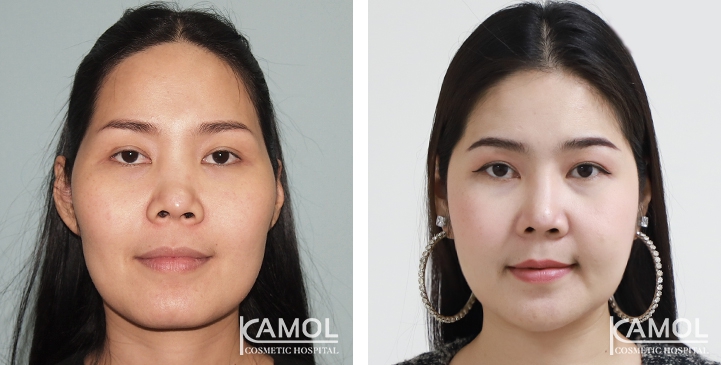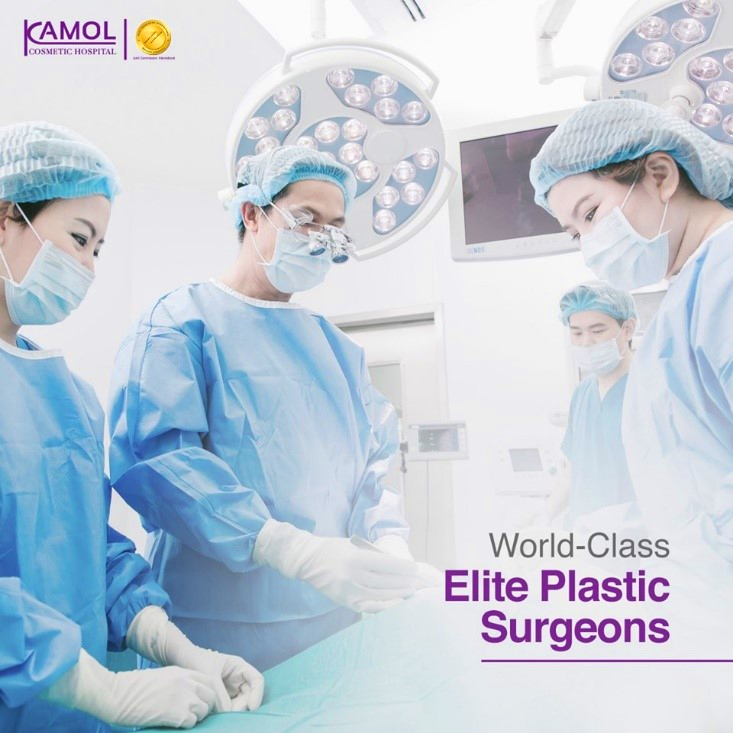Jaw Reduction Surgery
The jawline significantly influences how we perceive gender. Men typically have wider, more prominent jaws, while women tend to have narrower, more delicate ones.
Jaw reduction surgery is often a key component of Facial Feminization Surgery (FFS), as it reshapes the jawline to create a slimmer, more feminine appearance. A skilled surgeon uses their expertise to reshape the jaw, chin, and mandible, thus creating a harmonious and feminine lower face.
The jaw is crucial in achieving an attractive V-line shape face. It shouldn't be overly slim or broad; a gentle curve is ideal for an aesthetically pleasing result.
Choosing a Surgeon for Jaw Reduction
Jaw reduction is a complex procedure. As such, you must choose a surgeon who specializes in facial surgery, particularly FFS, as it demands a high level of skill and experience.
Make sure your surgeon is a Board Certified Plastic Surgeon or Maxillofacial Surgeon with extensive experience in facial bone surgery. This expertise minimizes risks like jawbone fractures, nerve damage, and loss of jaw function.
Preparing for Surgery
- Consultation: Discuss your goals and expectations with the surgeon, and understand the potential risks and complications.
- Medical Evaluation: Undergo a physical examination, which may include lab tests, a chest X-ray, a blood test, and an EKG if you are over 40 years old.
- Lifestyle Adjustments: Stop smoking for at least two weeks before surgery. Discontinue anti-inflammatory drugs like aspirin, Motrin, or Ibuprofen, as well as any vitamins or herbs that may interfere with blood clotting, at least two weeks before the procedure.
- Recovery Planning: Chewing will be difficult for up to a week after surgery. Prepare liquid foods, soups, and nutritional supplements to ensure adequate nutrition during your recovery.
Jaw Reduction Techniques at Kamol Cosmetic Hospital
Every individual has a unique facial structure. Kamol Cosmetic Hospital offers seven distinct jaw reduction techniques to address this diversity:
Jaw Reduction Type 1: Removes the mandibular angle. Suitable for individuals with a prominent jaw angle but a well-proportioned lower mandible and chin.
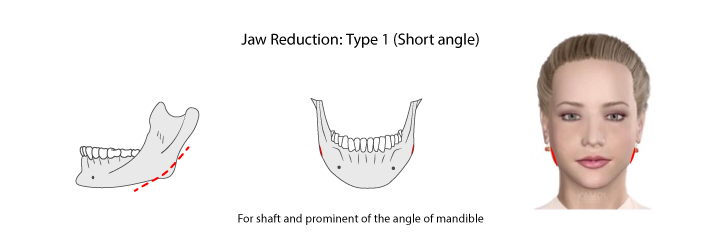
Picture1. Shows Jaws reduction type 1: the shaft and prominent of the angle of the jaw.
- Jaw Reduction Type 2: Reduces the posterior angle of the mandible. Ideal for those with a long and angled jaw.
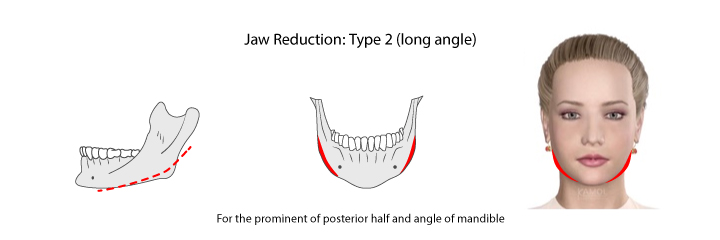
Picture 2 Shows jaw reduction type 2 for removing the prominent posterior angle of the mandible.
- Jaw Reduction Type 3: Reduces the mandible from the anterior to the posterior region. Suitable for individuals with square faces, broad chins, and strong jawlines.
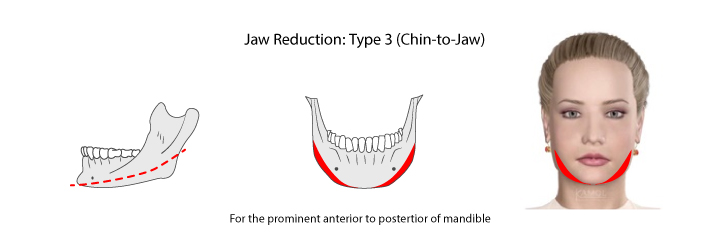
Picture 3 Shows jaw reduction type 3 For the prominent anterior to posterior of the mandible.
- Jaw Reduction Type 4: Reshapes the angle of the chin. Designed for those with a square chin.
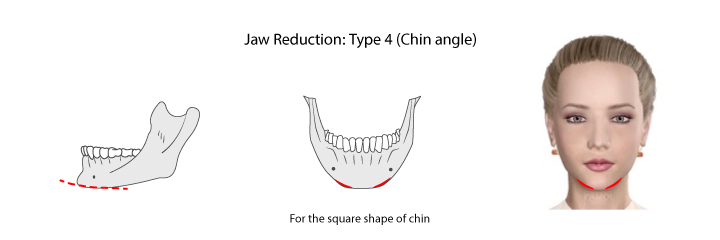
Picture 4 Shows jaws reduction types 4: To reduce square chins
- Jaw Reduction Type 5: Reduces the length of the chin. Suitable for those with a square and broad chin.
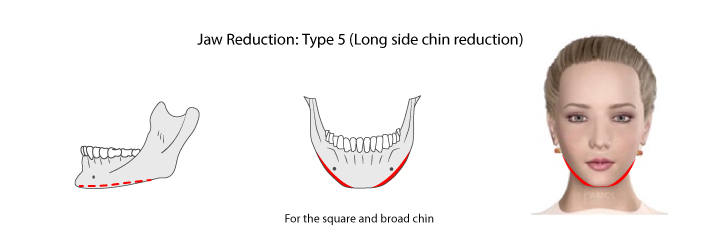
Picture 5 Shows jaw reduction type 5: Long side chin reduction.
- Jaw Reduction Type 6: Reduces the sides and vertical portion of the chin. Ideal for individuals with broad and long chins.
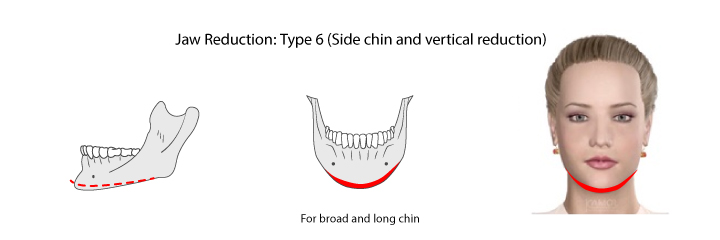
Picture 6 Shows Jaw reduction type 6: side chin and vertical reduction.
- Jaw Reduction Type 7: Reduces the posterior mandible from one side to the other. Suitable for those with broad, long chins and a prominent mandibular angle.
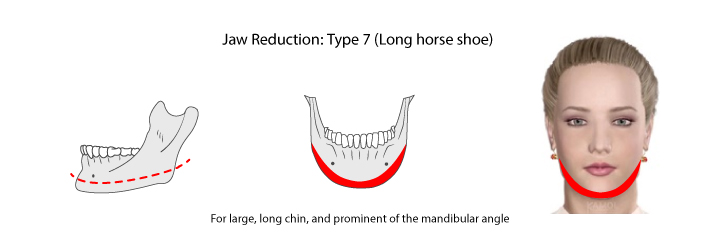
Picture 7 Shows jaw reduction type 7: Long horseshoe reduction.
Ideal Candidates for Jaw Reduction
- Individuals seeking to refine the lower face, jawline, chin, and mandible.
- Those with a wide jaw and a round face.
- Those with a long lower jaw.
- Those with a flat lower jaw.
- Individuals whose facial growth is complete.
- Physically healthy individuals.
- Non-smokers.
- Individuals with realistic expectations who understand the risks and potential complications.
Preparing for Jaw Reduction
- Consultation: Discuss suitable procedures and expected outcomes with your surgeon.
- Medical Assessment: Complete a physical examination, blood test, chest X-ray, electrolyte panel, and HIV test.
- Imaging: Undergo a CT scan for precise surgical planning.
- Lifestyle Adjustments: Refrain from smoking and consuming alcohol for at least one week before surgery.
- Medication Review: Stop taking medications, vitamins, or herbs that can interfere with blood clotting, such as aspirin.
Jaw Reduction Procedure
The operation typically takes 1-2 hours, depending on the complexity of the case. The procedure involves:
- Anesthesia: Administered under general anesthesia.
- Incision: An intraoral incision (inside the mouth) is used to minimize visible scarring.
- Bone Resection: Excess bone, muscle, and/or fat is carefully removed.
Postoperative Care
Proper postoperative care is essential for optimal healing:
- Oral Hygiene: Use mouthwash frequently to prevent infection.
- Swelling Management: Keep your head elevated to minimize swelling.
- Compression: Wear the provided compression bandage continuously for three days and during sleep for one month.
- Activity Restriction: Avoid strenuous activities for one month after surgery.
- Dietary Guidelines: Avoid alcohol for at least two weeks after surgery.
- Follow-up: Attend all follow-up appointments with your surgeon to monitor healing and address any concerns.
You can typically return to work within 7-10 days after surgery, although some residual swelling may persist. Exercise can usually be resumed after four weeks.
Risks and Complications
While generally safe, jaw reduction surgery carries potential risks, including infection, bleeding, blood clots, bruising, swelling, injury to surrounding tissues, nerves, or blood vessels, and allergic reactions to anesthesia. Specific risks associated with this procedure include:
- Numbness or decreased skin sensation in the surgical area.
- Tightness when opening the mouth.
- Zygomatic arch fracture.
- Zygomatic bone instability or malposition.
- In rare cases, revision surgery may be necessary.
Jaw Reduction Surgery Results
The results of jaw reduction surgery are permanent. Post-surgical swelling is common and will gradually subside. It may take several days before you can remove the compression bandage and fully appreciate the results.
As the swelling subsides over several months, the refined contours of your new jawline will become increasingly visible.
Getting to Know for Jaw Reduction Surgery / Jaw Shaving
Attractive Jaw
A well-defined jawline can enhance one's overall facial structure and improve one's appearance.
Feminine Jawline
The feminine jawline is characterized by a soft and delicate appearance, with a defined...
Aesthetic Jaw line
Having a defined and attractive jawline can greatly enhance one's overall facial appearance.
Before & After of Jaw Reduction Surgery / Jaw Shaving
Reviews of Jaw Reduction Surgery, Jaw shaving
Video : Jaw Reduction Surgery / Jaw Shaving
Why Jawline can identify gender?
The shape of a jawline plays a significant role in how we perceive a person's gender. A strong, defined jawline is often considered masculine, while a softer, less defined jawline is perceived as feminine.
‘This perception is heavily influenced by societal norms and gender stereotypes ingrained in our culture over time.’
- A masculine jawline is typically characterized by a square or rectangular shape with a sharp angle at the jawline. This shape is often associated with strength, power, and masculinity. Men with a strong jawline are usually perceived as more confident and assertive, which are traits traditionally associated with masculinity.
- A feminine jawline is typically characterized by a softer, rounder shape with a more gradual angle at the jawline. This shape is often associated with delicate features, femininity, and beauty. Women with a softer jawline are usually perceived as more delicate and feminine, which aligns with traditional gender norms.
‘Gender identity and physical characteristics are two different things; gender identity is an inner feeling and understanding of oneself as male, female, neither, or a combination of male/female; it's not based on physical characteristics.’
In conclusion, a jawline's shape impacts perceptions of gender, but it is not a definitive indicator of a person's gender. Society's gender norms and stereotypes play a significant role in shaping these perceptions, and it's essential to recognize that not all individuals conform to these traditional perceptions.
At Kamol Cosmetic Hospital: We are committed to providing inclusive and respectful care for all patients, regardless of their gender identity or physical characteristics. We understand that everyone's experience of gender is unique and personal, and we strive to provide a safe and welcoming environment for all individuals.
We recognize that some individuals may wish to alter their jawline shape to align more closely with their gender identity or personal preferences. Our team of experts in plastic and reconstructive surgery can help patients achieve their desired jawline shape using various techniques, such as jaw reduction surgery, jaw augmentation, or facial feminization surgery.
We understand these decisions can be complex and emotional, and we work closely with our patients to understand their goals and desires. We provide personalized care and support to ensure our patients feel comfortable and confident.
The shape of a jawline plays a significant role in how we perceive a person's gender. A strong, defined jawline is often considered masculine, while a softer, less defined jawline is perceived as feminine.
In conclusion,
A jawline's shape impacts perceptions of gender, but it is not a definitive indicator of a person's gender. Society's gender norms and stereotypes play a significant role in shaping these perceptions, and it's essential to recognize that not all individuals conform to these traditional perceptions.
At Kamol Cosmetic Hospital:
We are committed to providing inclusive and respectful care for all patients, regardless of gender identity or physical characteristics. We understand that everyone's experience of gender is unique and personal, and we strive to provide a safe and welcoming environment for all individuals.
We recognize that some individuals may wish to alter their jawline shape to align more closely with their gender identity or personal preferences. Our team of experts in plastic and reconstructive surgery can help patients achieve their desired jawline shape using various techniques, such as jaw reduction surgery, jaw augmentation, or facial feminization surgery.
We understand these decisions can be complex and emotional, and we work closely with our patients to understand their goals and desires. We provide personalized care and support to ensure our patients feel comfortable and confident.
Frequently Asked Questions (FAQs)
A: It is also known as jaw shaving, mandible angle reduction, or V-line surgery, it is a surgical procedure that reshapes the jawbone to create a slimmer, more contoured facial appearance. It involves removing excess bone and sometimes muscle from the jaw to reduce its width and prominence, often resulting in a more feminine or V-shaped face.
A: People choose this procedure for various reasons, including:
- Cosmetic Concerns: To achieve a more balanced and aesthetically pleasing facial appearance. Many individuals desire a slimmer, more oval, or V-shaped face.
- Facial Feminization: This is a common procedure in Facial Feminization Surgery (FFS) to soften masculine facial features and create a more feminine look.
- Functional Improvement: In some cases, this procedure may be recommended to improve bite function or address issues like temporomandibular joint disorder (TMJ).
A: You might be a good candidate for the procedure if you:
- Have a wide or square jawline.
- Have a prominent or protruding jaw angle.
- Desire a slimmer, more contoured facial appearance.
- Have completed facial growth.
- Are in good overall health.
- Are a non-smoker.
- Have realistic expectations about the outcome of the surgery.
A: There are several techniques, and the best approach will depend on your individual facial structure and desired outcome. Some common techniques include:
- Mandibular Angle Reduction: This involves removing a portion of the mandibular angle (the corner of the jaw) to reduce its prominence.
- Cortical Ostectomy: This technique involves shaving down the outer layer of the jawbone to create a smoother contour.
- Mandibular Body Resection: This involves removing a portion of the lower jawbone to reduce its width.
- Chin Reduction: This may be performed in conjunction with jaw reduction to further refine the lower face.
A: The surgery typically involves the following steps:
- Anesthesia: General anesthesia is administered to ensure your comfort during the procedure.
- Incision: An incision is made inside the mouth to avoid visible scarring.
- Bone Resection: The surgeon uses specialized instruments to carefully remove excess bone and/or muscle from the jaw.
- Closure: The incision is closed with dissolvable sutures.
A: The duration of the surgery varies depending on the complexity of the procedure and the specific techniques used. It typically takes between 1 to 3 hours.
A: Recovery from surgery involves:
- Hospital Stay: You may need to stay in the hospital for 1-2 nights for monitoring.
- Swelling and Bruising: Expect swelling and bruising around the jaw and face, which will gradually subside over several weeks.
- Pain Management: Pain medication will be prescribed to manage any discomfort.
- Dietary Restrictions: You will need to consume a liquid or soft food diet for the first few days or weeks after surgery.
- Oral Hygiene: Maintaining good oral hygiene is crucial to prevent infection.
- Compression Garment: You may need to wear a compression garment for several days to help reduce swelling.
- Activity Restrictions: Avoid strenuous activities and exercise for several weeks.
- Follow-up Appointments: Attend all scheduled follow-up appointments with your surgeon to monitor your healing progress.
A: Most people can return to work and light activities within 7-10 days after surgery. However, it may take several weeks to fully recover and resume strenuous activities.
A: While generally safe, the procedure carries potential risks and complications, such as:
- Infection
- Bleeding
- Nerve damage (resulting in temporary or, rarely, permanent numbness in the jaw or lower lip)
- Asymmetry
- Unfavorable scarring
- Adverse reaction to anesthesia
A: Yes, the results of the procedure are generally permanent. Once the bone is removed and the jaw heals in its new position, the changes are long-lasting.
A: The cost of the procedure varies depending on several factors, including:
- Surgeon's fees
- Hospital fees
- Anesthesia fees
- Geographic location
- Complexity of the procedure
Your surgeon will offer an accurate, personalised quote during your consultation – depending on your needs.
A: Insurance typically does not cover the procedure if it is performed for purely cosmetic reasons. However, if the surgery is medically necessary to correct a functional issue, insurance may provide partial or full coverage.
A: When choosing a surgeon, consider the following factors:
- Board certification: Choose a surgeon who is board-certified in plastic surgery or oral and maxillofacial surgery.
- Experience: Select a surgeon with extensive experience in jaw reduction and facial contouring procedures.
- Before and after photos: Review the surgeon's portfolio of before and after photos to get an idea of their work.
- Patient testimonials: Read reviews and testimonials from previous patients.
- Communication and trust: Choose a surgeon who you feel comfortable communicating with and who you trust to provide you with the best possible care.
A: Here are some ways to prepare for the procedure:
- Follow your surgeon's instructions carefully.
- Stop smoking and avoid alcohol for several weeks before and after surgery.
- Discontinue any medications or supplements as advised by your surgeon.
- Arrange for someone to drive you home after surgery and assist you during the initial recovery period.
- Stock up on soft foods and liquids.
- Prepare your home for your recovery, ensuring you have a comfortable place to rest and all necessary supplies within reach.
A: It's important to be well-informed. Here are some questions to ask your surgeon:
- What are my options for jaw reduction surgery?
- What technique is most suitable for me?
- What are the potential risks and complications?
- What is the expected recovery time?
- What are the costs involved?
- Can I see before and after photos of your previous patients?





